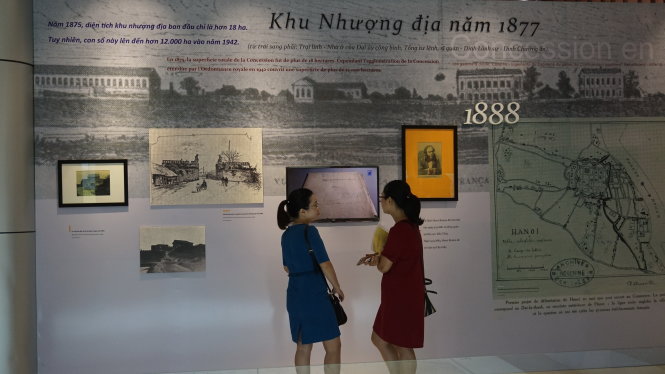The good old days of Hanoi in the 19th century is being depicted through an art exhibition of 130 different showpieces in the Vietnamese capital.
The event, “Hoai niem Hanoi pho,” or Nostalgic Hanoi, runs from September 6 to December 31 at the National Archives Center I in Cau Giay District.
The exhibition paints a perfect picture of Hanoi's old streets from the early 19th century until the mid-20th century, or the French colonialism period, during which the city was known for its Westernized urbanization mixed with thick culture and orderly streets.
The exhibition consists of three main parts, which are “From French concession to a Western neighborhood," “Hanoi Old Quarter," and “Hanoi and its surroundings.”
The display provides visitors with a thorough and detailed image of the Old Quarter of Hanoi from many perspectives including lifestyle, culture, and religion during the colonial period.
Visitors will also have the chance to get to know the lifestyle in 36 streets in the old town of Hanoi, and Hanoi Citadel with its ancient architecture through 130 exhibits.
The exhibition does not forget to showcase other landmarks that live through history and remain until today, such as the Temple of Literature, Ho Tay (West Lake), Hoan Kiem Lake, The Huc Bridge, and Ngoc Son Temple, among others.
Other structures that represent Western and Eastern architecture, or the fusion of both, are also on display.
The showpieces at “Hoai niem Hanoi pho” will provide as thorough an insight as possible into not only the scenery but also political system, people’s lifestyle, and other outstanding features of the old town to its visitors, according to the organizers.
One of the most noteworthy items at the event is a government notice, which represented strong democracy in urban management during the period.
The notice announced the expansion of the Hang Dau (Tofu) Street to 20 measurement units from May 2 to 20, 1925. The announcement was printed in three languages French, Vietnamese, and Chinese so it could be understood by as many people as possible.
People were not only informed of the expansion but also encouraged to see the paperwork and documents related to the matter, all of which were publicly displayed at Hanoi Administration Building along with a notebook in which everyone could write down opinions, disagreements, or objections.
Hence, everyone’s voice was heard and authorities made sure in every notice and bill passed that the citizens were aware of this right.
After having a close look at the notice displayed, historian Duong Trung Quoc commented that even though it was still a colonial democracy, people were still made involved in urban development and management.
It is an indicator that authorities during that period cared about practicing democratic regulations like in Western political models.
“Even though it was unsuitable, colonialism brought a valuable opportunity for Hanoi to interact with Western culture which left us a capital with numerous heritages, both tangible and intangible,” Quoc said.
“While we should have focused on developing, preserving, and advertising these aspects of the city, we have ignored them.”
The prestigious historian added that the French had properly preserved the Old Quarter of Hanoi, leaving Vietnam with the most valuable heritages because they respected the fundamental regulations of urban management.
Hanoi, the capital of Vietnam, is one of the most ancient capitals in the world known for its centuries-old architecture and a rich culture with Southeast Asian, French, and Chinese influences.
In the heart of the city lies the Old Quarter, where its narrow streets are roughly arranged by traditional trade.
The city first became the capital of Dai Viet, one of the former names of Vietnam, in 1010.
French influences on Vietnam began in the 17th century with the help of the Catholic Church.
The influences on Vietnam grew stronger in the 18th century until then-North Vietnam officially became a French colony at the end of the 19th century.
The French were in control of Vietnam for a century until the Geneva Accords signed in 1954 ended the era of colonialism and imperialism.
Like us on Facebook or follow us on Twitter to get the latest news about Vietnam!






















































